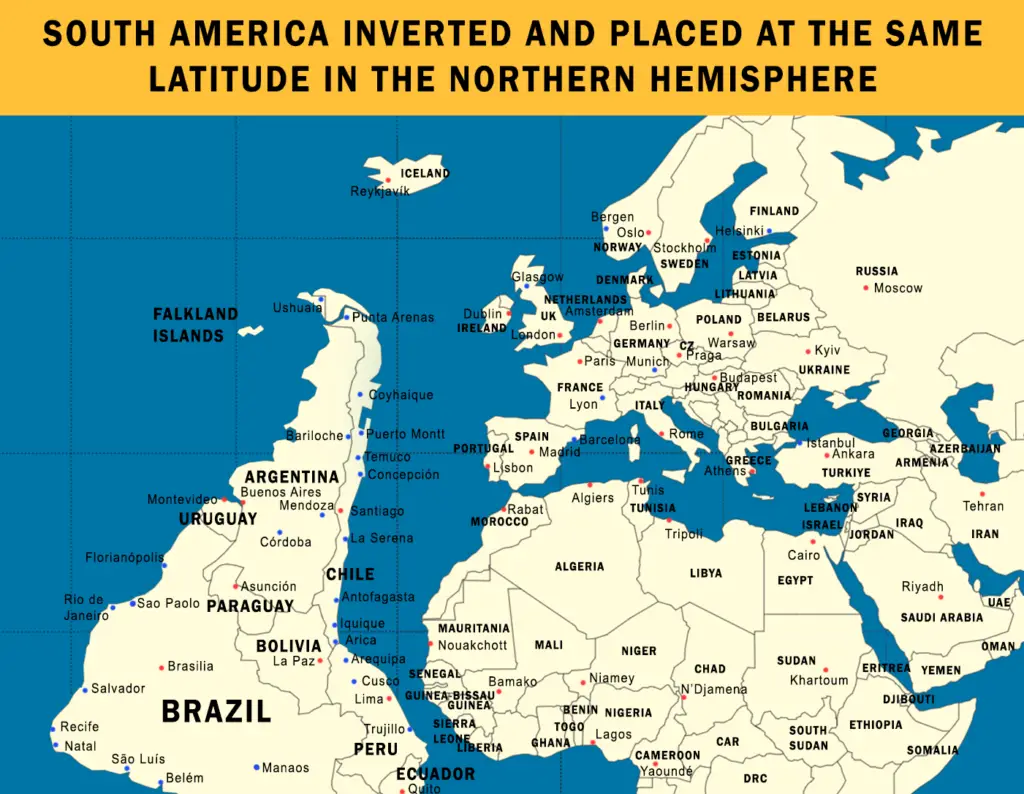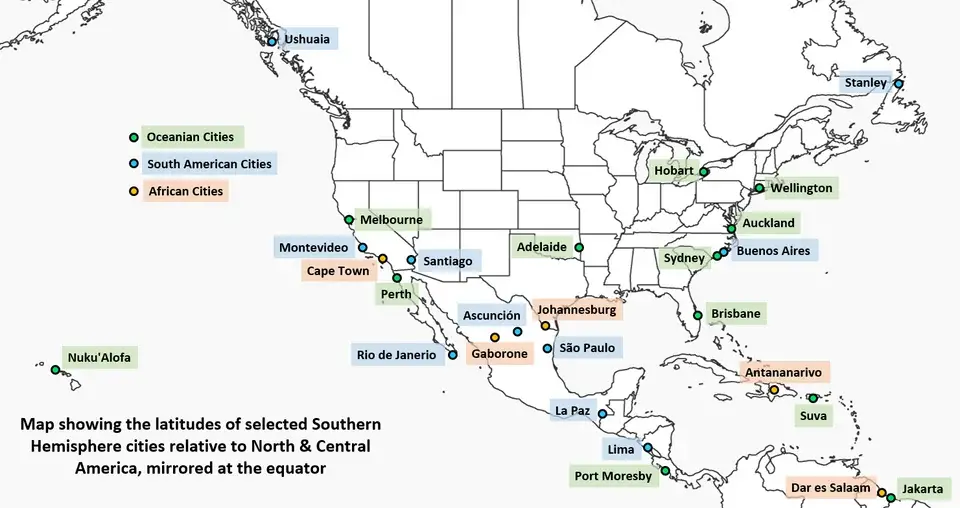What If South America Were in the Northern Hemisphere?
Have you ever wondered how cities in South America align geographically with cities in Europe, Africa, and the Middle East if South America were flipped into the Northern Hemisphere? A fascinating map created by Reddit user GeoAnt compares these regions by latitude, offering a new perspective on global geography.

When South America is inverted and placed in the Northern Hemisphere, many cities find surprising matches by latitude. Here are the key alignments:
- Ushuaia, Argentina (55.0°S) closely aligns with Oslo, Norway (59.9°N) and Stockholm, Sweden (59.3°N).
- Punta Arenas, Chile (53.2°S) corresponds to Copenhagen, Denmark (55.7°N) and Hamburg, Germany (53.6°N).
- Coyhaique, Chile (45.6°S) matches Paris, France (48.9°N) and Vienna, Austria (48.2°N).
- Temuco, Chile (38.7°S) parallels Lisbon, Portugal (38.7°N) and Rome, Italy (41.9°N).
- Puerto Montt, Chile (41.5°S) aligns with Athens, Greece (37.9°N) and Istanbul, Turkey (41.0°N).
- Bariloche, Argentina (41.1°S) compares to Milan, Italy (45.5°N) and Zurich, Switzerland (47.4°N).
- Buenos Aires, Argentina (34.6°S) aligns with Athens, Greece (37.9°N) and Algiers, Algeria (36.7°N).
- Santiago, Chile (33.4°S) corresponds with Tunis, Tunisia (36.8°N).
- Rio de Janeiro, Brazil (22.9°S) matches Karachi, Pakistan (24.8°N).
- Bogotá, Colombia (4.7°N) aligns with Addis Ababa, Ethiopia (9.0°N).
However, while these cities share similar distances from the equator, their climates are shaped by various factors like elevation, proximity to oceans, and prevailing weather patterns.
For instance, Buenos Aires has a humid subtropical climate with hot, wet summers, while Athens and Algiers enjoy Mediterranean climates characterized by hot, dry summers and mild, wet winters.
Santiago experiences a Mediterranean climate with dry summers and rainy winters, much like Tunis. However, Santiago’s higher elevation contributes to cooler temperatures during winter.
In Rio de Janeiro, the lush surroundings and tropical rainforest climate lead to high humidity and frequent rains. This contrasts sharply with Karachi, where a hot desert climate dominates, marked by scorching temperatures and little rainfall.
Bogotá, situated high in the Andes, has a cool tropical climate with year-round mild temperatures. Meanwhile, Addis Ababa, also at high elevation, experiences a tropical savanna climate with distinct wet and dry seasons.
The southernmost cities like Ushuaia and Punta Arenas feature cold, maritime climates akin to Oslo or Stockholm, with long, harsh winters and short, cool summers.
For geography enthusiasts, maps like this reveal the interconnectedness of our world. If you’re looking to bring the beauty of maps into your home, check out the wide selection of map posters of the world available on Amazon.
- Swiftmaps World Premier Wall Map Poster
- Laminated World Wall Map Classic Elite Map Poster with Flags
- Rand McNally Classic Edition World Wall Map
What do you think about this latitudinal comparison? Share your thoughts in the comments below!








